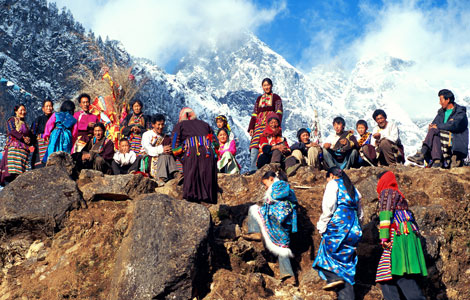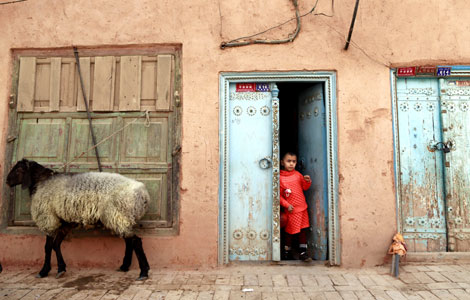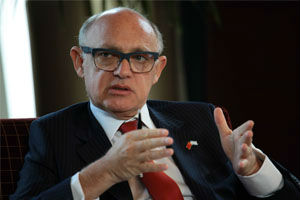In Asia-Pacific, HIV still high, report says
Updated: 2013-11-20 01:54
By Shan Juan in Bangkok, Thailand (China Daily)
|
|||||||||||
People in affected populations are asked to be agents of change
The Joint United Nations Programme on HIV/AIDS warned of high HIV prevalence in key populations in Asia and the Pacific such as intravenous drug users and men who have sex with men, according to the organization's latest regional report.
However, the report said most intervention programs that focus on the high-risk groups are inadequate in size and scale. The report, titled HIV in Asia and the Pacific: Getting to Zero, was released in Bangkok on Tuesday at the 2013 International Congress on AIDS in Asia and the Pacific.
"The pace of progress needs to be redoubled to sustain past achievements, and efforts should be more focused on smart investments in the right places and on programs to reach the people in greatest need," said Steven Kraus, UNAIDS director of the regional support team for Asia and the Pacific.
According to the report, issued every two years, an estimated 4.9 million people were living with HIV/AIDS in the region in 2012. Twelve countries account for more than 90 percent of the infected population, including Cambodia, China, India and Thailand.
The recommendation comes despite a 26 percent decrease in new infections in the region since 2001, and many countries, having reduced new infections by at least 50 percent thanks to strengthened intervention and treatment, it said.
However, challenges also exist at the "pivotal juncture", with the overall number of new infections in the region remaining largely unchanged in the past five years.
Notably, the fastest growing epidemics in the region involve men having sex with men, and the HIV prevalence of the group could be more than 10 percent in at least 10 metropolitan areas in the region, it said.
The situation in China is tough as well, said Wu Zunyou, director of the National Center for AIDS and Sexually Transmitted Disease Control and Prevention.
China has an estimated 780,000 people with HIV/AIDS and only 56 percent of them are aware of their status, according to the National Health and Family Planning Commission.
In 2012, nearly 20 percent of newly detected cases were related to gay sex, a huge increase over the 2.5 percent rate in 2006.
Kraus said that people living with HIV and those in high-risk populations must continue to be central to the region’s AIDS response as agents of change.
Wu said that China would step up efforts to address the fast-growing epidemic among the vulnerable groups, mainly by further scaling up HIV testing and treatment.
He also said that more targeted efforts would be directed at youths. "Students ages 15 to 24 are increasingly at high risk of HIV/AIDS and the population of men having sex with men is being hit most," he said.
In 2012, nearly 74 percent of the students with HIV/AIDS in this age group were infected via gay sex, he added.
Mechai Viravaidya, chairman of the anti-AIDS NGO Mechai Viravaidya Foundation in Thailand said raising awareness was important, and joint efforts were needed among all stakeholders, including the vulnerable groups themselves.
Related Stories
Chinese scientists lead breakthrough in HIV research 2013-11-06 07:00
HIV epidemic needs education, not bath house bans 2013-10-31 11:39
UN films highlight rise in HIV cases among women 2013-10-23 07:09
Draft banning HIV carriers from bathhouses studied 2013-10-15 20:10
Unprotected sex brings sharp rise in HIV/AIDS 2013-10-09 07:16
Taking the fight against HIV discrimination to the classroom 2013-09-09 15:50
Today's Top News
Obama's rating drops to all-time low
In Asia-Pacific, HIV still high, report says
China, EU to launch investment discussions
European leader touts advantages of summit
PBOC to let yuan float more freely
Nation 'a strong Games candidate'
China mulls roadmap to tackle climate change
Tourism year proves a big hit
Hot Topics
Lunar probe , China growth forecasts, Emission rules get tougher, China seen through 'colored lens', International board,
Editor's Picks

|

|

|

|

|

|





